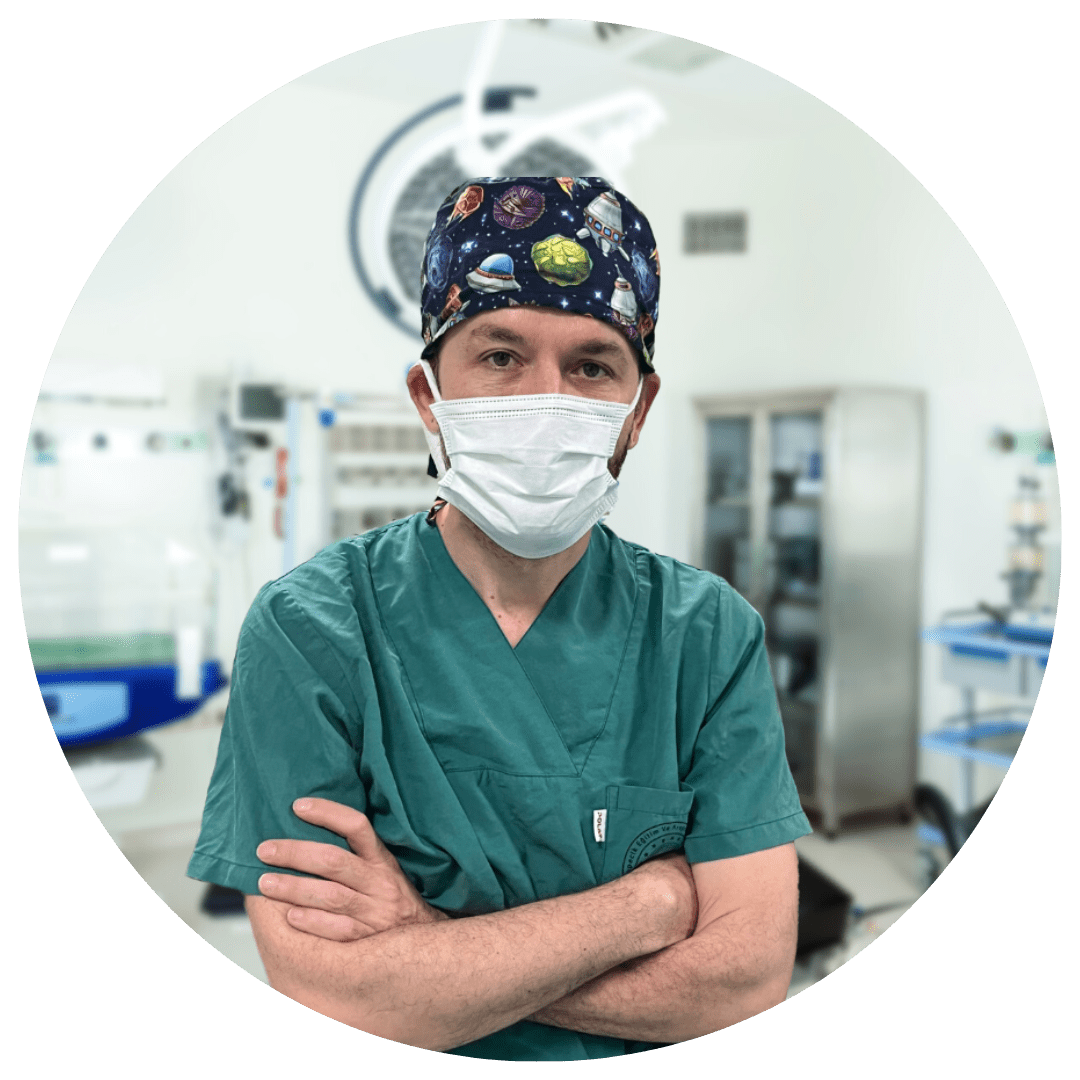- 3 May 2023
- Prof. Dr. Gökhan Koç
- Comment: 0
- Blog
Prostate surgery is a surgical procedure used to remove all or part of the prostate gland. The duration of the surgery depends on the type of procedure to be performed. Traditional open prostate surgery takes between two and four hours, while minimally invasive laparoscopic or robot-assisted surgeries may take slightly less time. The patient’s general health and the complexity of the surgery may also affect the duration. Recovery time may vary depending on the type of procedure performed. Some patients can return to normal activities within a few weeks, while others may take several months.
Types of Prostate Surgery
There are three basic types of prostate surgery, and each comes with its own advantages and disadvantages. Open prostate surgery is the traditional method, in which the surgeon makes a large incision in the lower abdomen to remove the prostate gland. Although this procedure provides the surgeon with a clear view of the prostate gland, it is the most invasive and the recovery time is the longest.
In contrast, laparoscopic prostate surgery and robot-assisted prostate surgery are less invasive procedures and require smaller incisions in the abdominal area. The surgeon then uses a laparoscope, which is a small tube with a camera attached to guide the surgical instruments. These procedures have a shorter recovery time and less risk of complications than open prostate surgery. However, these procedures are not suitable for all patients and may have limitations depending on the size and location of the prostate gland. Ultimately, the type of procedure recommended by a doctor will depend on the patient’s specific health needs and the characteristics of the prostate gland.
Factors Affecting Surgery Duration
There are several factors that affect the duration of prostate surgery; These include the patient’s general health, prostate gland size and location, and the type of procedure to be performed. If the patient has pre-existing medical conditions such as heart disease or diabetes, this can complicate the surgery and prolong the time. Additionally, the size and location of the prostate gland may also affect the procedure time. If the gland is particularly large or in a difficult location, surgery may take longer than usual.
The surgeon’s experience and skill level may also play a role in surgery time. Experienced surgeons who have performed many prostate surgeries can complete the procedure more quickly and efficiently than less experienced ones. Additionally, the complexity of the surgery may also affect procedure time. For example, if the surgeon encounters unexpected complications during surgery, this may increase the time. In conclusion, there are many factors that affect the duration of prostate surgery, and by discussing these factors with their doctors, patients can better understand what to expect.
Risks and Complications
As with any surgical procedure, there are potential risks and complications associated with prostate surgery. These include bleeding, infection, blood clots, and damage to surrounding tissues and organs. Urinary incontinence and impotence are also possible side effects of prostate surgery, but the risk of these side effects can be reduced with certain surgical techniques. Patients should discuss the potential risks and benefits of prostate surgery with their doctors.
Regular follow-up visits with the doctor after prostate surgery are important to monitor for potential complications. Patients may also need additional procedures or treatments depending on the specific condition. It is important to follow the doctor’s postoperative instructions carefully and report any concerning symptoms immediately.
Recovery and Rehabilitation
Recovery time after prostate surgery may vary depending on the type of procedure performed and the patient’s overall health. Patients may experience some discomfort and pain in the days immediately following surgery and may need to limit their physical activity for a while. Patients will have to learn to do pelvic floor exercises to increase bladder control after surgery. In most cases, patients can return to work and normal activities within a few weeks after surgery.
For a successful recovery, it is important for patients to carefully follow their doctor’s postoperative instructions. This may include measures such as taking painkillers as prescribed, avoiding heavy lifting and strenuous physical activities for a while, and going to follow-up appointments with their doctor. It is also important for patients to maintain a healthy diet and stay hydrated to promote healing.
References:
https://www.hopkinsmedicine.org/health/conditions-and-diseases/prostate-cancer/prostatectomy-what-to-expect-during-surgery-and-recovery
https://www.mayoclinic.org/tests-procedures/prostatectomy/about/pac-20385198
https://www.healthline.com/health/prostate-surgery
https://www.webmd.com/men/prostate-enlargement-bph/enlarged-prostate-time-prostate-surgery
https://www.hopkinsmedicine.org/health/conditions-and-diseases/prostate-cancer/surgery-for-prostate-cancer

Prof. Dr. Gökhan Koç graduated from Gazi University Faculty of Medicine in 2000. After his graduation, he worked as a research assistant in the urology clinic at Tepecik Training and Research Hospital for 5 years and became a specialist doctor in 2007. He currently provides services in urological surgery in İzmir.




